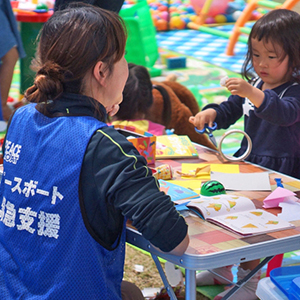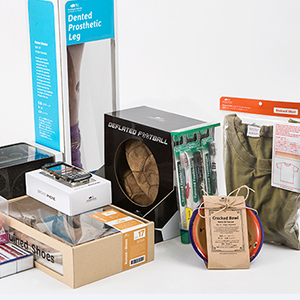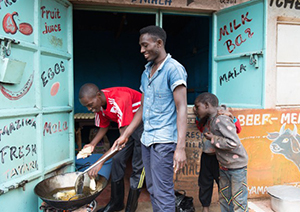Finding the right thing to do in a foreign country can be tough but some decisions are easier than others. In May 2016, I flew to Kumamoto City to see first hand the damage that the series of earthquakes in the area, in March, had done. I wanted to offer my help to alleviate some hardships facing residents.
I volunteered with Christian Relief, Assistance, Support, and Hope (CRASH), a non-profit organisation based in Tokyo that mobilises Christian volunteers to work with churches and other local ministries following disasters. I knew about CRASH’s work as I had previously volunteered through them in Fukushima Prefecture, in 2012, when I moved to Japan.
CRASH got involved in offering relief in Kumamoto soon after the disaster, sending about 180 volunteers to the area during Japan’s Golden Week holiday period (29 April–5 May) alone.
When I arrived, I was not sure what to expect. Would all the buildings be condemned? Would the city be a ghost town or be running smoothly? Initially, I stayed at the relief headquarters in Kumamoto. Although parts of the city were badly damaged—including numerous small houses that had been flattened—it was mostly okay.
There were colour-coded surveyor’s reports posted on the front of those buildings that remained standing. These ranged from green (safe) to yellow (limited access) to red (unsafe). Many were red, indicating that the residents of those buildings were not allowed access. These buildings are likely to be demolished.
Other than structural damage, the city seemed to be trying to return to normal, with cafés reopened and trams, buses and trains all running on time.
Our job as volunteers was simple: help in any way the locals requested. With around eight organisations all working together, we were sent out each day to carry out work such as removing belongings from condemned properties or clearing away broken furniture or other debris.
All those we helped were very glad of our assistance.
Each day we restocked the storehouse and delivered any necessary supplies to a church in Mashiki. From there, it was redistributed locally. Mashiki and the surrounding settlements were more badly affected than other areas, and locals were relying on daily supplies.
We learned that many houses were without water or electricity, forcing the residents out of their homes to evacuation centres. Some residents instead lived in their cars or tents around the shelters, either from fear of being indoors or because the shelters would not accept them.
It will take a long time for the towns affected by the disaster to return to normal and for the needs of those affected to be met. Among our group of volunteers were several nurses who made daily trips to the shelters to offer medical care and assistance.
All organisations involved in the relief work appear to have planned carefully following lessons learned in the aftermath of the Great East Japan Earthquake and Tsunami in 2011, and are working well together. My sincere hope is that through this work the people of Kumamoto are able to get back to having a normal life soon.






